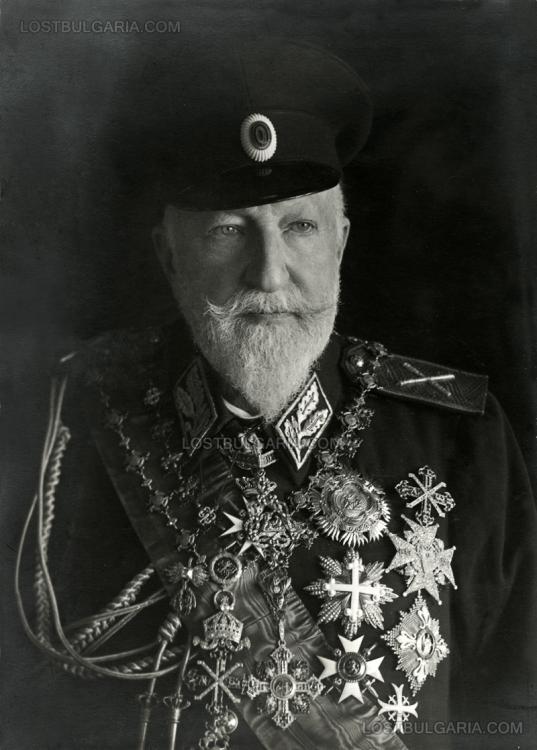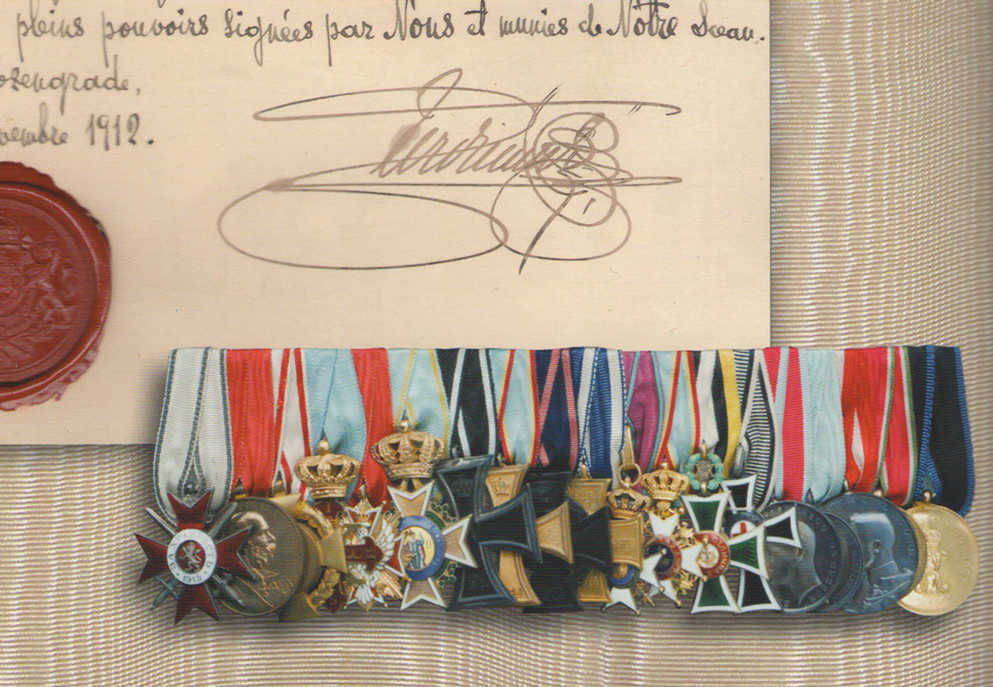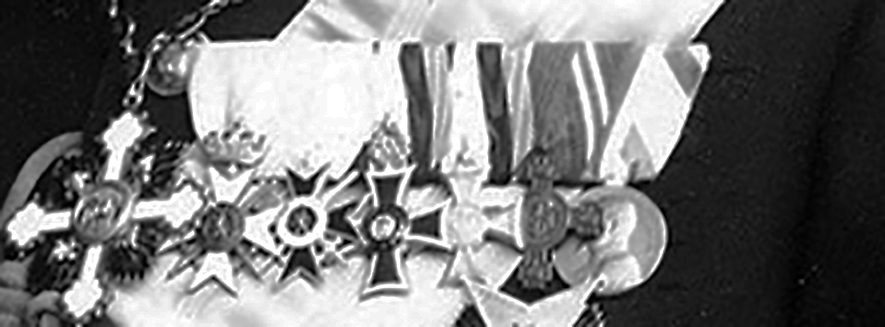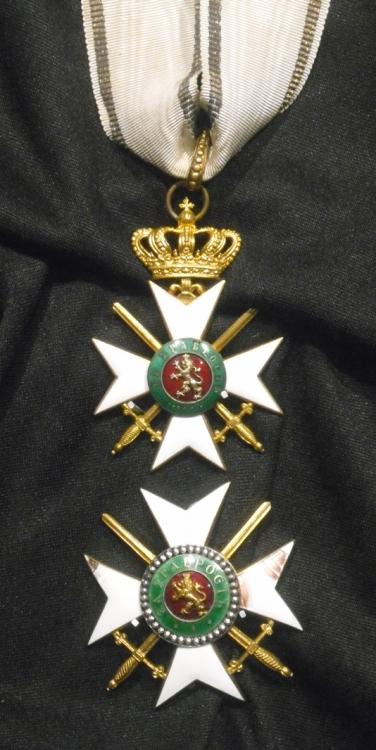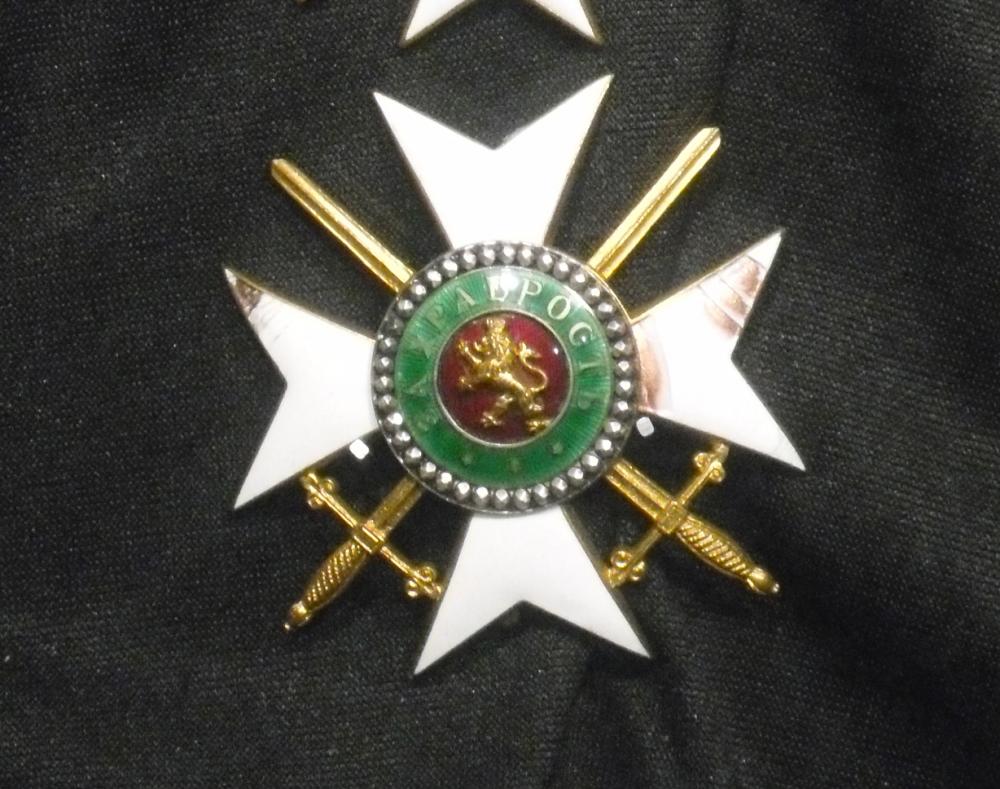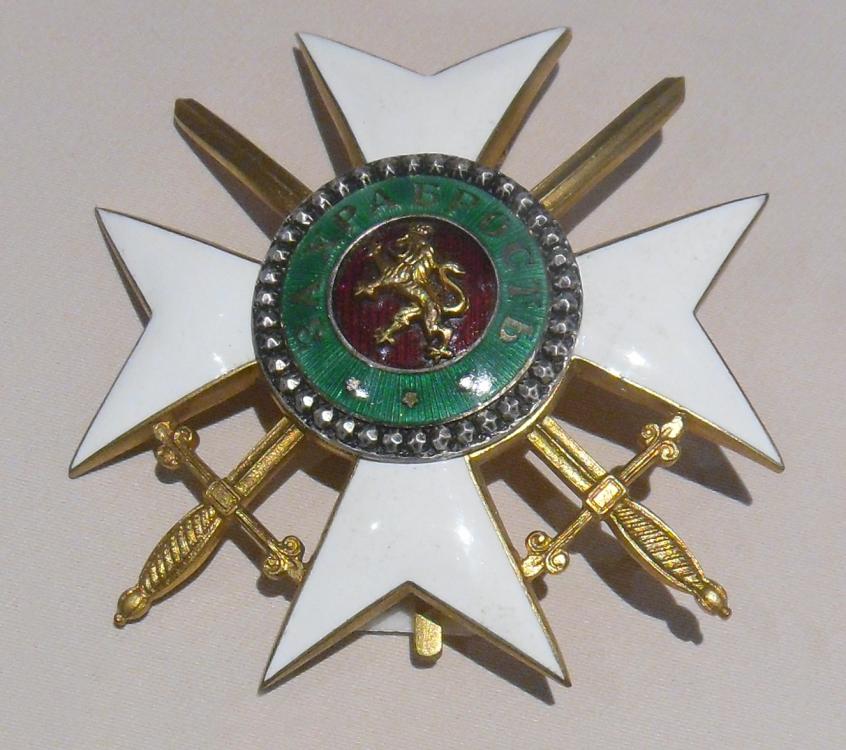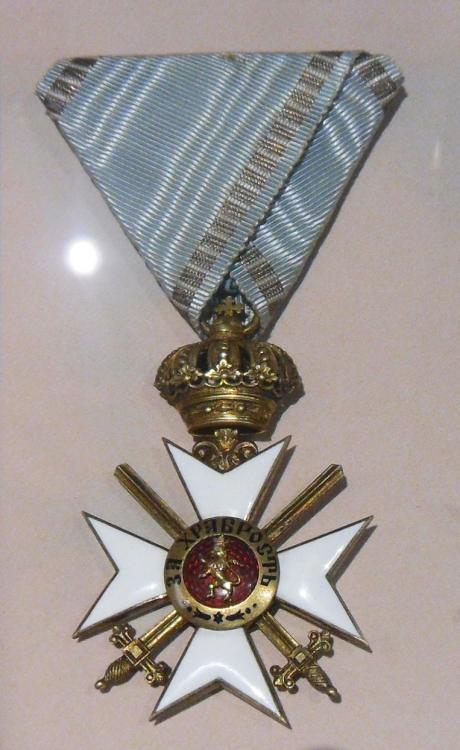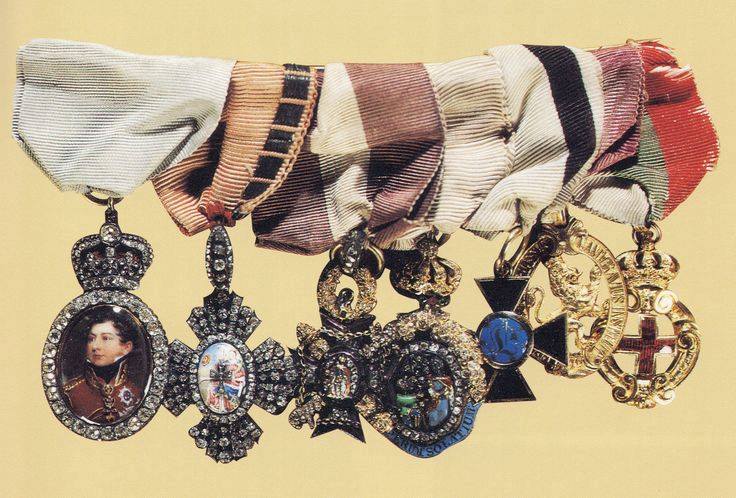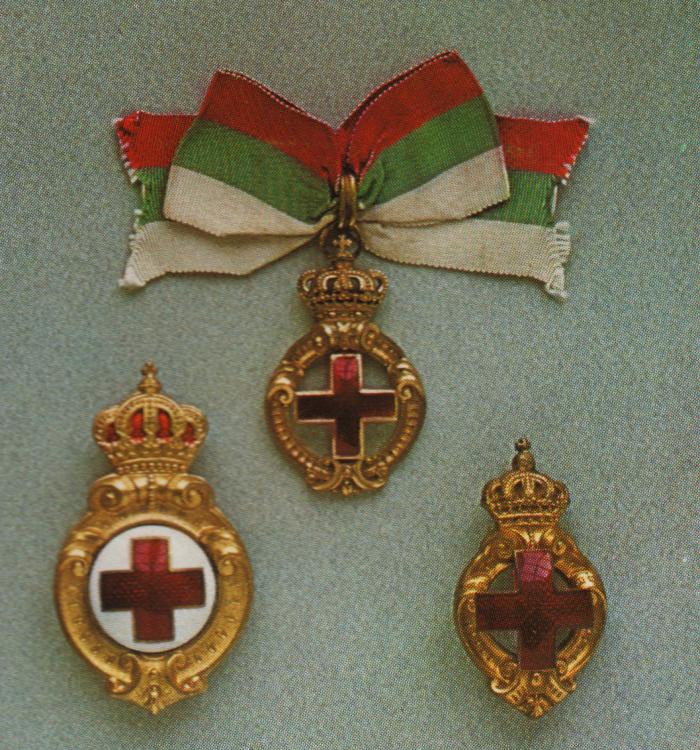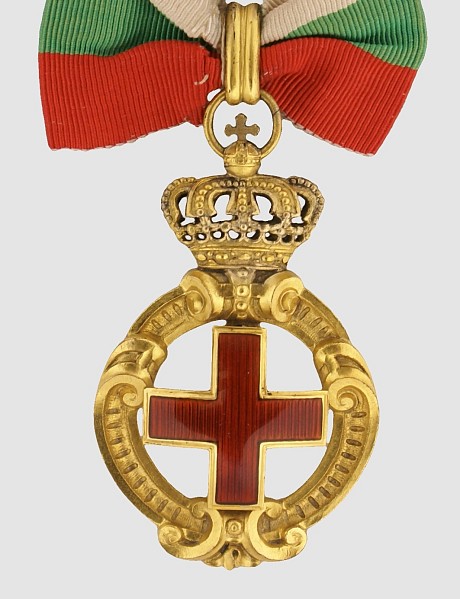-
Posts
232 -
Joined
-
Last visited
Content Type
Profiles
Forums
Blogs
Gallery
Events
Store
Everything posted by ilieff
-
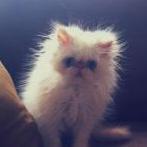
King Ferdinand I's decorations
ilieff replied to ilieff's topic in Central & Eastern European States
Great! Very nice! I'm adding two more photographs. On the first one is visible the diamond set and collar of St. Stephan. PS: I am still baffled by this Order of White eagle suspended from a Red ribbon. As far as I know, regardless of Russian or Polish, the ribbon is always blue (light or deep) -

King Ferdinand I's decorations
ilieff replied to ilieff's topic in Central & Eastern European States
It's an official portrait from 1896 -

King Ferdinand I's decorations
ilieff replied to ilieff's topic in Central & Eastern European States
@paja Looks like the Prince has received the Badge of the Orthodox Palestine society well before that. Below is a photograph of Prince Ferdinand taken in Moscow in 1883 during the coronation of Emperor Alexander III. Does anyone recognise the two arrowed decorations? The star looks something between Hohenzollern order and Star of Karađorđe. -

King Ferdinand I's decorations
ilieff replied to ilieff's topic in Central & Eastern European States
Thank you all for your contribution. I will add the following to the list: - Military Order of Maria Theresa - Update the Legion of Honour with the particular class - am I correct to assume that the breast star from the pictures provided above was once gilded?) - Order of Prince Danilo I and Russian Order of St. Alexander - Can we have a proof of the second one, please? I assume one of the breast stars is St. Alexander - Ottoman Order of Distinction (I assume a diamond set as it looks a bit different to the samples in the internet) - Order of the Cross of Takovo and the Star of Karadzordze - Does 1st class equal Grand cross? The Badge of the Orthodox society appears to be very rare but I will not include it in the general list. It's indeed interesting why he was given this in the first place. It might have to do with the agreement for the heir to the throne, future king Boris, to be converted to the Orthodox faith. @Igor Ostapenko Regarding your request, I can make another scan if you want, but it will never be of a good quality due to the way the album was printed. I do admire your interest though - it is an interesting IV class badge. Also, since you started posting pictures of the King himself, I will try to arrange and upload a few where his awards are more visible. Thank you, once more. PS: Can previous posts be edited somehow? -
Hi all, I am currently trying to assemble a full list of the decorations received by HM King Ferdinand I of Bulgaria. Unfortunately, my knowledge only covers Bulgarian decorations, so the majority of the 'foreign' ones are very blurry to me. I'd appreciate your help with identifying more orders/medals which belonged to Him and/or improving the existent info by defining the particular class received. Regards, ilieff PS:I've spotted a similar list on Wikipedia.org but I believe it's very inaccurate. Bulgaria: - Order of SS Cyril and Methodius - Military Order "For Bravery" - Royal Order of St. Alexander - Order of Civil Metir - Order of Military Merit German Empire - Order of the Black eagle - Order of the Red Eagle - Imperial Military order of the Iron cross - Pour le Merite (Military division) - Order of Saint John (Johanniter Order) - Saxe-Ernestine House order - Order of the Wendish Crown - Military Merit cross (Mecklenburg) Austro-Hungarian Empire - Order of the Golden Fleece - Order of St. Stephan British Empire - Order of the Bath - Royal Victorian Order Russian Empire - Order of St. Andrew - Order of the White Eagle - Order of St. Vladimir - Order of St. Anna - Order of St. Stanislav France - Order of the Legion of Honour Ottoman Empire - Gallipoli star (Iron Crescent) Kingdom of Italy - Order of the Holy Annunciation - Order of St Maurice and Lazarus - Constantine Military order of St George Kingdom of Belgium - Order of Leopold Kingdom of Portugal - Order of the Tower and Sword - Order of Aviz Kingdom of Sweden - Order of the Seraphim Kingdom of Denmark - Order of the White Elephant Empire of Brazil - Order of the Rose Other - Military order of St John of Jerusalem (Maltese order) - Order of Pope Pius IX An image scanned from Schalafoff's book: King's early bar And a second scan from that very same album: Second (later) bar which belonged to the King.
-

Bulgaria Bugaria- Order of St. Alexander ?
ilieff replied to dedehansen's topic in Central & Eastern European States
Very nice order, Graf. A noticeable difference between the French and Austrian made crosses (for this period) is the loop - French ones have double decorative loop, while Austrian examples - a spherical-shaped one. It is indeed very difficult to find out who the maker was. The order of St Alexander is probably the most diverse (in terms of emissions and variations) order in Bulgarian history and many of the badges were not marked at all. -

73 YEARS SINCE KING BORIS III DEATH
ilieff replied to Graf's topic in Central & Eastern European States
It is important to note here, that, at present, only the King's heart is buried in the Rila monastery. The rest of His body was never found, after His re-burial in the Pallace of Vranya (1945), where his second tomb has then been demolished brutally (in 1950). -
I am almost certain the middle one is part of a chain/collar used by judges in Poland. In this case, the eagle hasn't got any crown, so it means it's from the communist era. See below a similar chain used today.
-

73 YEARS SINCE KING BORIS III DEATH
ilieff replied to Graf's topic in Central & Eastern European States
Allow me to present my version (composite image) of this legendary star. PS: Due to the unknown text on the central medallion, I've put some gibberish and the year 1938. -

73 YEARS SINCE KING BORIS III DEATH
ilieff replied to Graf's topic in Central & Eastern European States
Unfortunately, nobody has got a decent photograph of this breast star. The Military museum in Sofia have on display the X-years one, so I assume that they do not have the XX-years star (otherwise, they'd show it). I guess that if it still exists, will probably be part of the Royal Collection of HM King Simeon II, OR part of the collection of an advanced private collector. -

73 YEARS SINCE KING BORIS III DEATH
ilieff replied to Graf's topic in Central & Eastern European States
Nice colourisations, Alex. I also colourise old images but so far, mainly of King Ferdinand I. By the way, King Boris had blue eyes. A side note here: A close-up image of a King Boris III's bar. This one, though very humble, is one of the largest he has worn. He was not into showing off His medals. During His reign, He only wore consistently 1) The small necklace of SS Cyril and Methodius, 2) His 3rd class 1st grade order "For Bravery" and 3) later the unique breast stars for X and [later] XX years of faithful army service, presented to him by the Army HQ. -
Hi all, These are not awarding documents in the classic sense of the word. Look at the dates when these were issued - Igor's document for example is well before the introduction of the first type medal. Issuing such document is a general practice of the Bulgarian military at that time. Veterans would request a special document to be issued (on behalf of their [former] military unit) which will state where and when they've fought. This document will then be used as a proof of their participation in the war - either for being eligible for decoration with war medals, or e.g. being eligible to get a veterans' pension. In both cases we have here, the overleaf of the document is used as an improvised awarding document, composed and signed by the regimental officials. Basically, the certificate for participation in the war has been converted into a '2in1' certificate/awarding diploma. This makes each document unique and extremely valuable from collector's point of view. As far as I know, the larger 'prettier' documents appear slightly later (during the Regency) - initially bearing the name of Prince Alexander I and later - that of Prince Ferdinand I.
-
The first type(s) medal is still baffling both collectors and researchers. Nothing is 'for sure' about this particular award.
-

73 YEARS SINCE KING BORIS III DEATH
ilieff replied to Graf's topic in Central & Eastern European States
Well done! Two good quality images from wikipedia: The silver wreath with the effigy of the King (which by the way looks pretty much like the ones on His medals) has been presented by the people of Macedonia as a gratitude for their liberation in 1941. The inscription says 'Grateful Macedonia to her Liberator Tsar (King)'. -

Bulgaria FAKE BULGARIAN ORDERS ON THE MARKET
ilieff replied to Graf's topic in Central & Eastern European States
Hi all, @Graf Apolgoies, by 'post-war' I actually meant post-WW1 issue. The image posted by me should be of a standart issue 1st class Star of the '3-dots' issue. I've uploaded it for reference as the conversation was going for the poor quality of the sword handles of the fake star you posted. The 'three dots' issues are very rare indeed. That's one of the reasons why even researchers are not very confident about it. From the few issues available today (as far as I know, only 1st, 2nd and 4th class 2nd grade issues are known), researchers conclude that this emission has either been a trial emission, or has been minted in very limited numbers in order to decorate a small number of individuals. In his books Todor Pertov mentioned (can't recall exactly) that a Soviet general has also been presented (after the communist coup d'etat) with the 1st class set with three stars (i.e. dots) on the obverse. This suggests that the Chancellery of Bulgarian orders did still have this emission in stock. A side note here: Little known fact is that actually once the communists took over the power in the land, their militias stormed into the Chancellery and started hammering down all the orders and medals because, according to their beliefs, 'all royal and fascist symbols should be erased'. Unexpectedly though (considering that WW2 was still raging), a new large batch of new decorations arrives (having been ordered well before that). Then, someone slightly more intelligent than the members of the militia, has suggested that instead of destroying these, the new government can actually make use of them by amending their appearance slightly. This is how the whole concoction of the so called regency and republican issues came to pass - the royal cyphers, effigies and crowns were removed at different stages. Back to my point - at different times, different practice has been used when decorating individuals. For example, after WW2 and probably after WW1 too, decorations with the Order "For Bravery" have been conducted either with old 'seven dots' badges in stock, or with amended badges - the central medallions, featuring '1915' or '1941' on the obverse have been changed with old ones (usually 'seven dots' ones). Some assume that the goal of the 'three dots' issue was indeed to satisfy the need of certain scarce classes which did not have '1915' inscribed on them (for obvious reasons), in order to resume decorations during the interwar years. Following this logic, the 3rd class 2nd grade badge shown above by Vazov could well be an example of the above - a 1941(1915) issue with changed frontal central medallion. Lastly, do not forget the third kind of badges (along with genuine samples and fakes) - the custom-made samples, produced upon request of their holders. I believe the above Soldiers' cross shown by Graf is such example. I've seen pictures of 2-3 similar badges, all of which used to belong to Germans. Again, looking at the unorthodox badge 4th class 1 grade posted by Vazov, this could well be a custom made badge too. Of course, this cannot be easily proven. It's just my feeling. It all got too long to read. Sorry about that. -

Bulgaria FAKE BULGARIAN ORDERS ON THE MARKET
ilieff replied to Graf's topic in Central & Eastern European States
Graf is correct - the Military Museum in Sofia have loads of decorations, some of which are unique and are not displayed in the permanent exhibition. As far as I know, the Chairman of the Museum itself is a dedicated researcher in the field. Even so, there are many incorrectly displayed orders and medals - wrong ribbons or sets, made up of a badge and star from different periods. While the incorrect ribbons could be down to the people who once wore the decorations, the incorrect matching of the sets is something which can always be fixed by the museum associates. The best (which is actually worst) example of an incorrectly displayed set is from the window display where the so called personal collections of Bulgarian monarchs are shown. Below is a picture of one of the 1st class sets which is said to have belonged to Prince Alexander I. Look at the star - it's from the so called 'three dots' emission (post Great war period) which is decades after the actual abdication of 1886. I assume this is due to the fact that they do not have the unique 'skull and bones' rounded star and decided to put something else instead. Also, attached is a close up of the star. As for the order with the lily - please note that according to researchers there are two subtypes of these orders - one is with smooth edges and the order - with added decorative notches, which might suggest different manufactures or at least different batches. However, this would not explain the missing/hidden pattern on the one from eMedals. In order to contribute to the above posts in regard to 1st class star - another image of a 'three dots' emission star from the same museum. The sword handles do look well defined, even for a post-war issue. Also, a photograph of a very unorthodox 3rd class badge. I have not seen anything like this, have you? -
922F is correct - this is a grand/great cross with diamonds. Here's another image of the same badge.
-
Yes, very possible to be part of a bar, considering that the ribbon is only worn on one side. Below is a bad-quality picture of a miniature bar worn by Queen Victoria who was actually the first ever recipient of the Bulgarian Red Cross badge in 1886. She's been presented with a specimen made of gold.
-
Unfortunately, there are no pictures of the reverse.
-
As promised, The scan of the image from Romanoff's book. Unfortunately, the quality of the images there is not great as seen here. In addition, these images are very tiny - 2 by 4 inches or so, thus not able to provide nice scans for it. I am providing two scans of Todor Petrov's book (a great source of info and image reference too): The Red Cross badge: and the Red Cross medal (the original topic):
-
This image is taken from Prince Romanoff's book (though the original source is an acution, I think). I will see if I can get a better scan of this image once I get home later today.
-
Igor, I do not know Mr Manov personally. It looks like he's collecting loads of different stuff and also writing about it (indirectly). If you enquire some good quality imagery, I guess you can message him on Facebook and ask - https://www.facebook.com/galerianeron As for the red cross badge shown above - yet, it's a rare type of cross indeed, though the badge is a rarity by itself. I think this type is the only major type which has not been displayed by Graf in the images above. Red Cross badges can be worn in various styles, including with the rosette ribbon below the badge. Very stylish. I've attached a sample image of this type of cross with a suspension ribbon (can't recall the correct source though - somewhere from the vast Internet). Regards, Ilieff
-
Please post a normal quality photograph/scan of your medal and ribbon. I am sure the folks here will be able to tell you whether it's original or a replica ribbon.
-
Right, from top to bottom. I am saying (again) that what appears to you as 'shaven' Prince Ferdinand is just a matter of loss of the details of the medal or poor manufacture in the first place. The matrix used to stamp the medals tend to lose their details after a certain amount of pressings. The beard on these medals is only visible in well preserved medals, due to its structure. Plus, who'd order a new effigy just to show their new humble beard and leave all the other details pretty much the same? I don't know what's excellent about the webpage you're quoting but if you feel like so, let it be. The links you posted above lead to partially true/partially incorrect info. Probably that's why is the confusion. I don't use the internet as a reliable source of information. People tend to write various things, so I stick to books instead. There authors research the topics for years beforehand. There have been a few nice books published, including in English, on this topic. I believe they can be ordered online too. I actually have the Pavlov's catalogue for sale now - that's an extremely rare piece. And I don't know why you keep iterating the topic about the colour. The medal uses the ribbon of the Alexander order and practically 90% of the Alexander orders of that time have crimsonish ribbons. I am attaching an Easter present for you - A ribbon chart I made (so no copyrights here, I guess). Regards,
-
I cannot see what you're trying to prove here. Are you trying to say that the so called 2nd Ferdinand emission should actually be divided into two or more? The emission stands for any major modification of the appearance of the medal. The two medals which you're pointing out are simply different examples of the same issue (one of them obviously repaired/amended). Medals (especially this and the next emission) and orders have been manufactured in multiple batches by different jewellers across Europe - from Austro-Hungary, to France, down to the smallest Germanic states. It's normal for these to differ in terms of material, quality, markings, signatures etc. I think the topic is 'resolved' already. PS: You failed to mention your sources of info.



